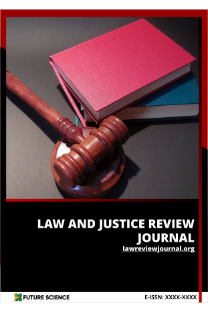THE NOTION OF CORPORATE GOVERNANCE AND COMPARISON OF THE US, UK AND GERMAN CORPORATE GOVERNANCE MODELS
Şirket Yönetimi Kavramı ile Amerikan, İngiliz ve Alman Şirket Yönetim Modellerin Bir Karşılaştırması
___
Books and ArticlesAguilera, Ruth V, Williams Cynthia A, Conley John M and Rupp Deborah, Corporate Governance and Social Responsibility: A Comparative Analysis of the UK and the US, Corporate Governance: An International Review, Volume: 14, No: 3, May 2006, pp.147-158
Albert-Roulhac, Catherine, and Peter Breen, Corporate Governance in Europe: Current Status and Future Trends, Journal of Business Strategy, Volume: 26, Issue: 6, 2005, pp.19-29
Barnett Abigail and Maniam Balasundram, A Comparison of US Corporate Governance and European Corporate Governance, The Business Review, Cambridge, Vol. 9, Num. 2, Summer, 2008
Burmajster Anna, The United Kingdom, in The Handbook of International Corporate Governance: a definitive guide, Second Edition, 2009
Clarke Thomas and Douglas Branson, Introduction: Corporate Governance An Emerging Discipline?, in Clarke Thomas and Branson Douglas (editors), The SAGE Handbook of Corporate Governance, SAGE, 2012
Goergen Marc, International Corporate Governance, 2012
Grossman, Nadelle, Director Compliance with Elusive Fiduciary Duties in a Climate of Corporate Governance Reform, Fordham Journal of Corporate and Financial Law, Volume: 12, Issue: 3, 2007, pp.393-466
Hopt, Klaus J, and Leyens Patrick C, Board Models in Europe Recent Devel-opments of Internal Corporate Governance Structures in Germany, the United Kingdom, France, and Italy, European Company and Financial Law Review, Volume: 1, Issue: 2, 2004, pp.135-168
Iulia Lupu, Corporate Governance in Central and Eastern Europe: Convergence to European Corporate Governance? Annals of the University of Oradea, Economic Science Series, Vol. 17 Issue: 2, 2008, pp.694-698
Jackson Katharine V, Towards a Stakeholder-Shareholder Theory of Corporate Governance: a Comparative Analysis, Hasting Business Law Journal, Vol.7, Issue.2, 2011, pp.309-392
Salacuse Jeswald W, Corporate Governance in the New Century, Company Lawyer, 2004
Smith Adam, An Inquiry Into the Nature and Causes of the Wealth of Nations, 2009
Jungmann Carsten, The Effectiveness of Corporate Governance in One-Tier and Two-Tier Board Systems Evidence from the UK and Germany, European Company and Financial Law Review, Volume: 3, No: 4, 2006, pp.427-474
Mallin A. Christine, Corporate Governance, Oxford University Press, 2004
Nordberg Donald, Corporate Governance: Principles and Issues, SAGE, 2011
OSullivan Mary, Corporate Governance and Globalization, the Annals of the American Academy of Political Science, Volume: 570, no: 1, 2000, pp.153-172
Ping Zou and Andy W. Cheng, Corporate Governance: A Summary Review on Different Theory Approaches, International Research Journal of Finance and Economics Issue: 68, 2011, pp.7-13
Plessis Jean Jacques Du/Hargovan Anil and Bagaric Mirko, Principles of Contemporary Corporate Governance, Cambridge University Press, Second Edition, November 2010
Raber Roger and Lajoux Alexandra, The United States of America, in The Handbook of International Corporate Governance: a definitive guide, Second Edition, 2009
Solomon Jill, Corporate Governance and Accountability, Third Edition, 2010
Strenger Christian, Overview and Current Issues in Germany, in The Handbook of International Corporate Governance: a definitive guide, Second Edition, 2009
Thomsen Steen and Conyon Martin, Corporate Governance: Mechanisms and Systems, McGraw-Hill Education, 2012
Tricker Bob, The Evolution of Corporate Governance, in Clarke Thomas and Branson Douglas (editors), The SAGE Handbook of Corporate Governance, SAGE, 2012
Tricker Bob, Corporate Governance: principles, policies and practices, Second Edition, Oxford University Press, 2012
Ungureanu Mihaela, Models and Practices of Corporate Governance Worldwide, Volume: 4, Issue: 3a, 2012, pp.625-635
Veasey E. Norman, The Emergence of Corporate Governance as a New Legal Discipline, The Business Lawyer, Volume: 48, No: 4, 1993
Wei Yuwa, Comparative Corporate Governance, Kluwer Law International, 2003
Zhao Jun, Comparative Study of US and German Corporate Governance: Suggestions on the Relationship Between Independent Directors and the Supervisory Board of Listed Companies in China, Michigan State Journal of International Law, Volume:18, No:3, 2010, pp.495-510
Internet Resources
Bohinc Rado, One or Two-Tier Corporate Governance Systems in Some EU and Non EU Countries, p.61, online at: http://www.megatrendreview.com/files/articles/015/RadoBohinc.pdf, accessed on: 16.01.2013
European Commission, Green Paper: The EU corporate governance framework, online at: http://ec.europa.eu/internal_market/company/docs/modern/ com2011-164_en.pdf, accessed on: 11.01.2013
EWMI/PFS Program / Lectures on Corporate Governance - Three Models of Corporate Governance December2005.doc, online at: http://www.emergingmarketsesg.net/esg/wp-content/uploads/2011/01/Three-Models-of-Corporate-Governance-January-2009.pdf, accessed on: 06.01.2013
Financial Reporting Council, The UK Approach to Corporate Governance, October 2010, online at: http://www.frc.org.uk/Our-Work/Publications/Corporate-Governance/The-UK-Approach-to-Corporate-Governance.aspx, accessed on: 01.02.2013
Mendez A. Miguel, Corporate Governance: A US/EU Comparison Course Outline, online at: http://www.foster.washington.edu/centers/gbc/Documents/ Faculty/Miguel%20Mendez%20Final.pdf, accessed on: 05.01.2013
Towers Watson, A Lack of Shared Identity versus a Move towards Convergence, online at: http://www.towerswatson.com/assets/pdf/6977/EC-Corporate-Governance.pdf,accessed on: 10.01.2013
- ISSN: 1309-9485
- Yayın Aralığı: 2
- Başlangıç: 2010
- Yayıncı: Türkiye Adalet Akademisi
POLITICS IN LAW PRACTICE: ECHR'S APPROACH TO THE DISSOLUTION OF POLITICAL PARTIES
EU ENLARGEMENT MACHINERY AND THE UNIQUENESS OF TURKEY'S PROTRACTED CANDIDACY
Yücel OĞURLU, Seda KALKAN BAĞDATLI
CHAPTER 23, JUDICIARY AND FUNDAMENTAL RIGHTS; THE ENGINE FOR THE REFORM PROCESS IN TURKEY
THE PROTECTION OF REFUGEES AND ASYLUM SEEKERS AGAINST EXTRADITION UNDER INTERNATIONAL LAW
A STUDY ON CONFISCATION WITHOUT EXPROPRIATION IN THE TURKISH LAW
THE COMPANIES ACT 2006 IN THE UNITED KINGDOM AND ITS IMPACT ON THE ENGLISH LEGAL SYSTEM
